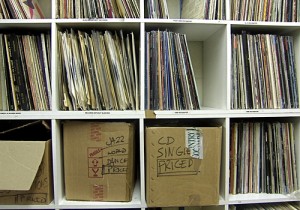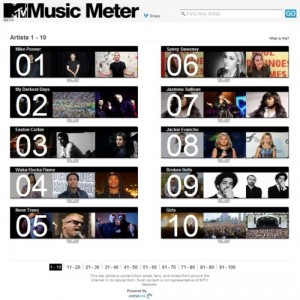 The growing availability of music through online sources is changing the way people listen to, buy (or download), and discover music. We have access to a ridiculous amount of music today compared to only a few years ago. Instead of hearing only a limited selection of songs provided by public radio or depending on suggestions from friends for new albums, we now have an infinite music library available to us online. While access to this music is right at our fingertips, navigating through the ‘clutter’ to find what we like can be an arduous process.
The growing availability of music through online sources is changing the way people listen to, buy (or download), and discover music. We have access to a ridiculous amount of music today compared to only a few years ago. Instead of hearing only a limited selection of songs provided by public radio or depending on suggestions from friends for new albums, we now have an infinite music library available to us online. While access to this music is right at our fingertips, navigating through the ‘clutter’ to find what we like can be an arduous process.
To counteract this, and help listeners find what they want to hear, applications have been developed (like iTunes ‘Genius’ or Pandora) use data about the music itself and those who have purchased it to suggest similar artists. Other websites (like The Hype Machine) allow listeners to discover new music with online ‘buzz’ from music blogs. Paul Lamere (Director of Developer Platform for The Echo Nest) wants to help users find new music using a combination of these tactics.
The Echo Nest is a music intelligence company in Somerville, MA that analyzes music and information that allows developers to build interactive search music apps. At the core of the Echo Nest is the ‘Musical Brain’, which automatically 1) Reads about music (blog posts, reviews, discussion boards, etc.), 2) Listens to music (extracting tempo, instrumentation, key, etc.), and 3) Learns music trends (following behavior on social networks, p2p networks, to understand ‘buzz’ and predict trends). Music services such as MTV Music Meter, Mog All Access, and The Music Maze use the Echo Nest platform to create music apps that not only helps listeners discover new music, but can also help artists identify areas where their music is popular, which might help them choose tour locations.
 In his SXSW panel in March, Paul Lamere will take this concept even further, examining how images and visualizations can be incorporated into the process of music discovery. These visualizations might range from hand-drawn maps of artists to graphs, timelines, flow diagrams, or even highly interactive 3D environments. To read more about the Echo Nest or Paul’s work, check out his blog, or follow him on Twitter. Also, try a music discovery game that uses the Echo Nest platform called ‘Music Maze’ here.
In his SXSW panel in March, Paul Lamere will take this concept even further, examining how images and visualizations can be incorporated into the process of music discovery. These visualizations might range from hand-drawn maps of artists to graphs, timelines, flow diagrams, or even highly interactive 3D environments. To read more about the Echo Nest or Paul’s work, check out his blog, or follow him on Twitter. Also, try a music discovery game that uses the Echo Nest platform called ‘Music Maze’ here.

Permalink
Nice write-up, thanks!
Permalink
Permalink